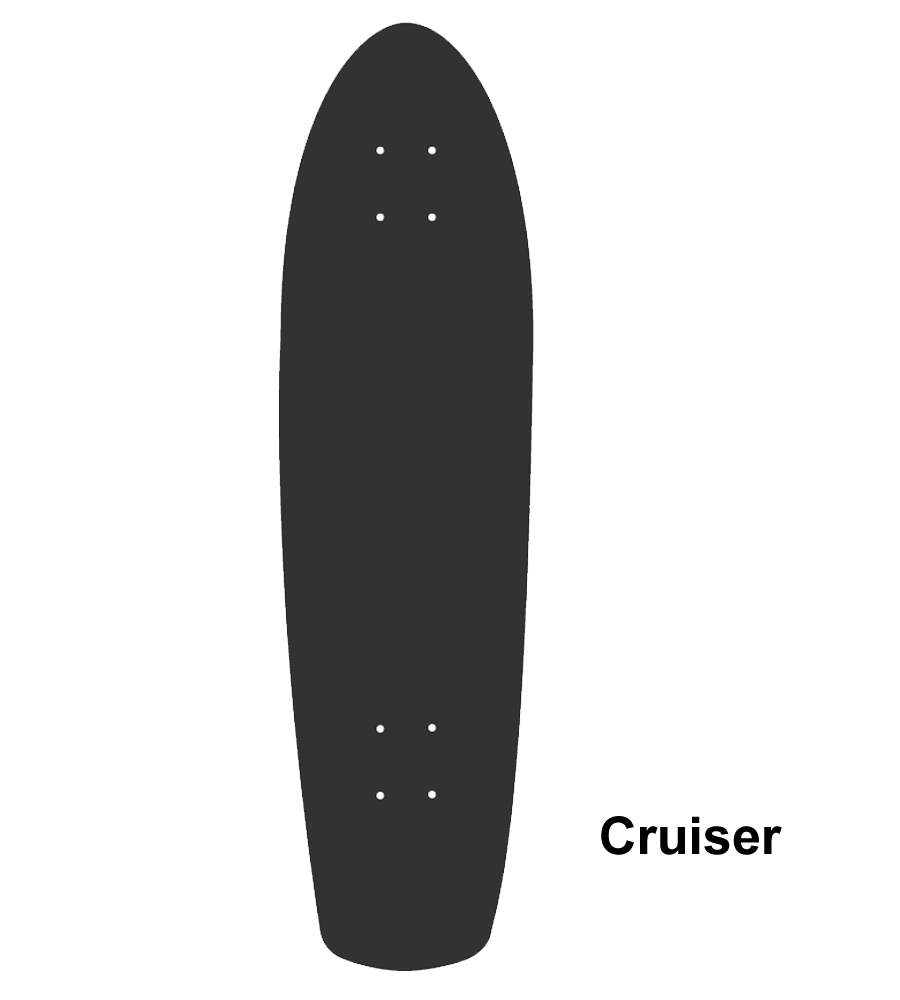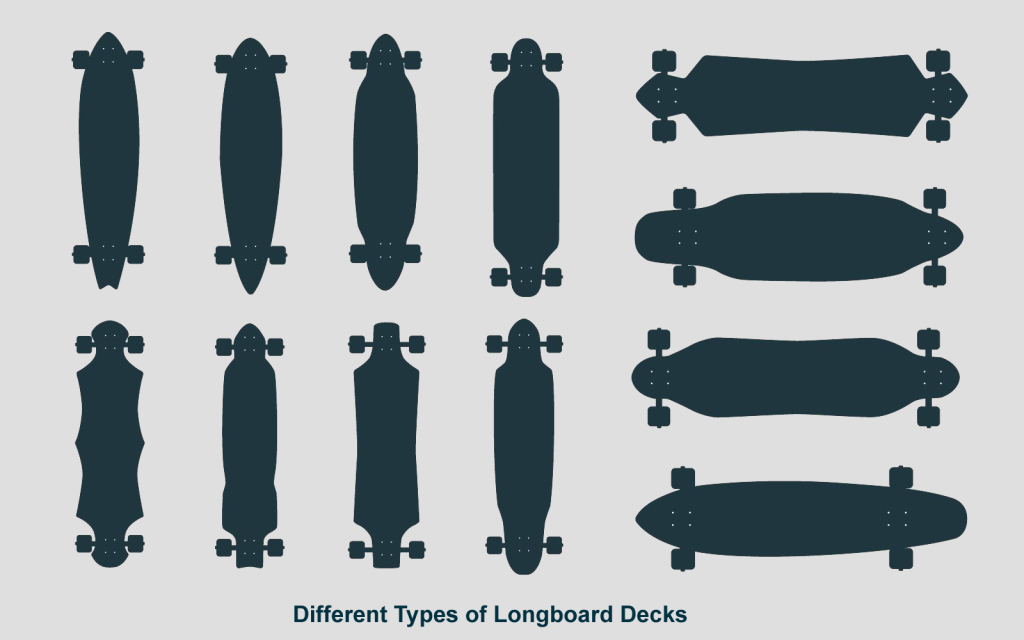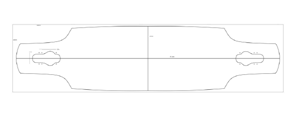The variety of longboard decks available on the market can feel overwhelming. Knowing what design is best for your ride and the terrain is essential, from pintails to drop-throughs.
So the short answer of the different types of longboard decks are commuters, kicktails, pintails, drop-throughs, cruisers, and hybrids with different features like materials and shapes.
Here’s a breakdown of the several types of longboard decks to make an informed decision when shopping for the best longboard deck.
9 Types of Longboard Decks

Pintail
The most classic shape, this deck features an elongated nose and tail with no cutouts or cocktails.
Pintails are great for cruising around town since they’re highly maneuverable and stable at low speeds. They also tend to be very light in weight due to their simple design.
Drop Through
Perfect for downhill riding and carving, drop-through decks feature cutouts in the board that allow you to “drop through” your trucks. This lowers the center of gravity and makes for a more stable ride at higher speeds.
Kicktail
Great for tricks, cocktails are decks with an extended nose or tail (or both), which make it easier to perform ollies and other flip tricks.
Cruiser
As its name implies, cruiser decks are designed for cruising around town.
They typically have shorter wheelbases and wider platforms than other longboard designs, making them more maneuverable and comfortable over short distances.

Dancer
A dancer deck is similar to a pintail in shape but usually has a wider platform and a slightly less pronounced nose and tail.
This type of deck is great for dancing and freestyle riding, giving you more room to move around on the board.
Hybrid
As its name implies, hybrid decks combine elements from different types of longboards to create a unique design perfect for all-around use.
They tend to be slightly larger than pintails or dancers, with just enough nose and tail kick to make them good for tricks while still being stable at high speeds.
Commuter
Commuter decks tend to be broader and longer than other longboard designs for commuting.
This allows them to carry more weight and provide a comfortable ride over longer distances.
Concave Shapes
In addition to the various deck shapes, longboards come with different concave shapes. These provide extra grip, control, and a more comfortable ride.
The most common concave shapes are radial, camber, and rocker.
Radial
This is the most straightforward concave shape, with a consistent curve from one end of the board to the other. It provides a comfortable ride that’s great for cruising and carving.
Camber
In this type of concave shape, the center of the board is slightly raised off the ground while the edges remain close to it. This helps keep your feet secure on longer rides and gives you more control when taking sharp turns.

Longboard Deck Shapes Based On Different Styles
Top-mount

Top-mount decks are traditionally shaped, with the deck sitting on top of the trucks. This design is great for riders who prefer to be more in control when riding and are looking for maximum stability.
Drop-down
As its name implies, drop-downs feature a lower center of gravity than other longboard designs. This gives you extra stability and allows you to carve tighter turns without sacrificing speed or control.
Drop Through

As with drop-downs, drop-through decks have a lower center of gravity than other longboard designs. The difference is that the trucks are mounted through the deck instead of on top of it. Carving and cruising around town makes for an even more stable ride.
Drop Deck

Drop decks feature a lowered platform between the trucks and the deck. This gives you more stability at higher speeds, making them ideal for downhill riding.
Double-Drop Deck

As its name implies, double-drop decks have two lowered platforms; one between the trucks and the deck and another below the trucks. This lowers your center of gravity even further than a standard drop deck, making it great for downhill riding and carving.
Mini Cruiser
Mini cruisers offer a regular longboard’s maneuverability in a much smaller package. They are usually shorter and narrower than other longboards, making them perfect for commuting short distances.
Twin-Tip
This is a symmetrical deck shape with cocktails on both ends. It’s highly maneuverable and perfect for riders who like to do tricks and freestyle riding.
Differences in Materials
Maples
Maple is the standard type of wood that is used for longboard decks. It’s lightweight, strong, and has good flex properties.
Bamboo
Bamboo is an increasingly popular material for longboards due to its strength and flex characteristics. It also adds a unique aesthetic to any board.
Fiberglass
Fiberglass is a composite material that can be combined with other materials (such as maple or bamboo) to create a stronger and more flexible deck.
Carbon Fiber
Carbon fiber is the strong and lightest material available for longboard decks but comes at a premium price tag. Carbon fiber may be worth the investment if you want ultimate performance.
FAQs
Are longboards suitable for tricks and stunts?
Yes! Twin-tip decks are specifically designed for freestyle riding and doing tricks. Wear plenty of safety gear and only attempt tricks within your skill level.
What is the best longboard Deck for beginners?
A mini-cruiser or top-mount deck with radial concave is often the best for beginners. These are stable and easy to control, making them perfect for learning how to ride a longboard.
As you become more experienced, you can look into other decks that offer more stability or maneuverability.
Are electric longboards suitable for carving and cruising?
Electric longboards have plenty of power to take on hills and carve tight turns. Practice safe riding techniques and follow local regulations when using electric longboards in public spaces.
Conclusion
No matter what type of deck you choose, remember that it’s essential to find one that fits your riding style and terrain. That way, you can enjoy the ride without worrying about breaking or damaging your board. Moreover, you should also check the material and build of the decks so as not to break your longboard in the middle of the game.
